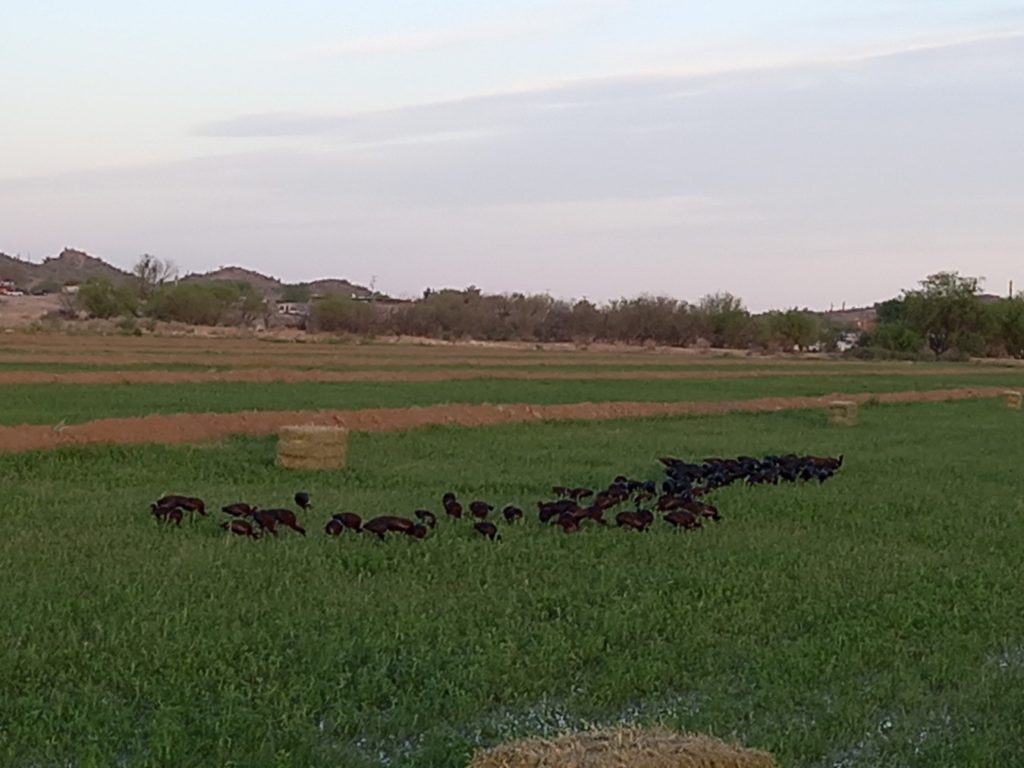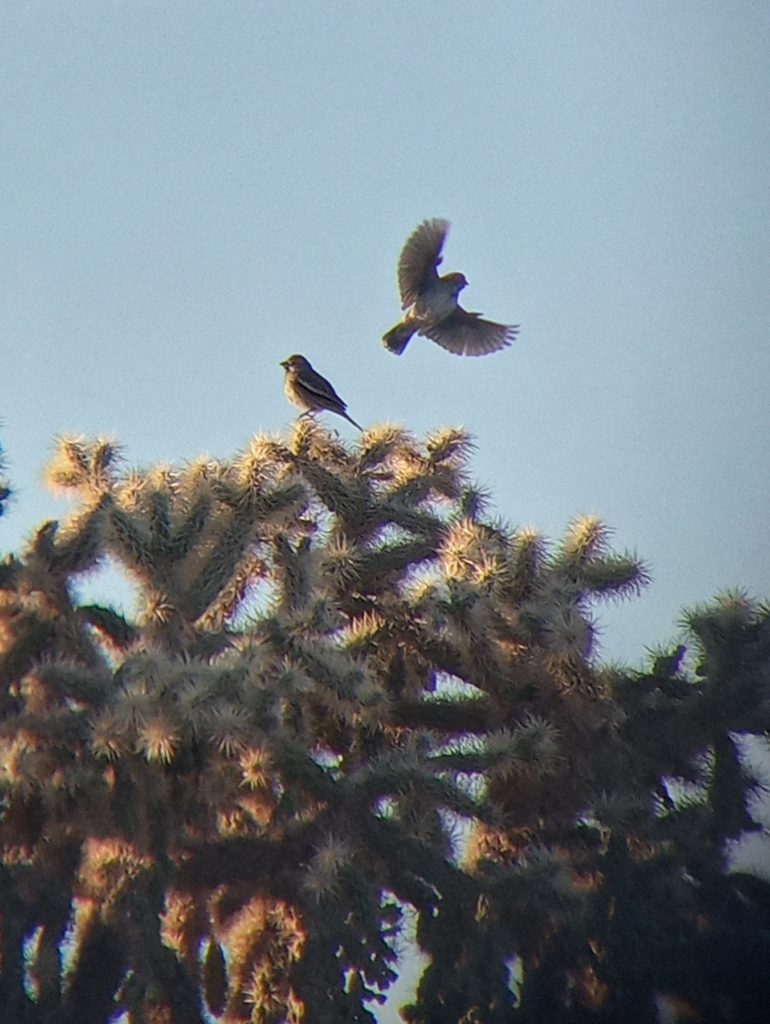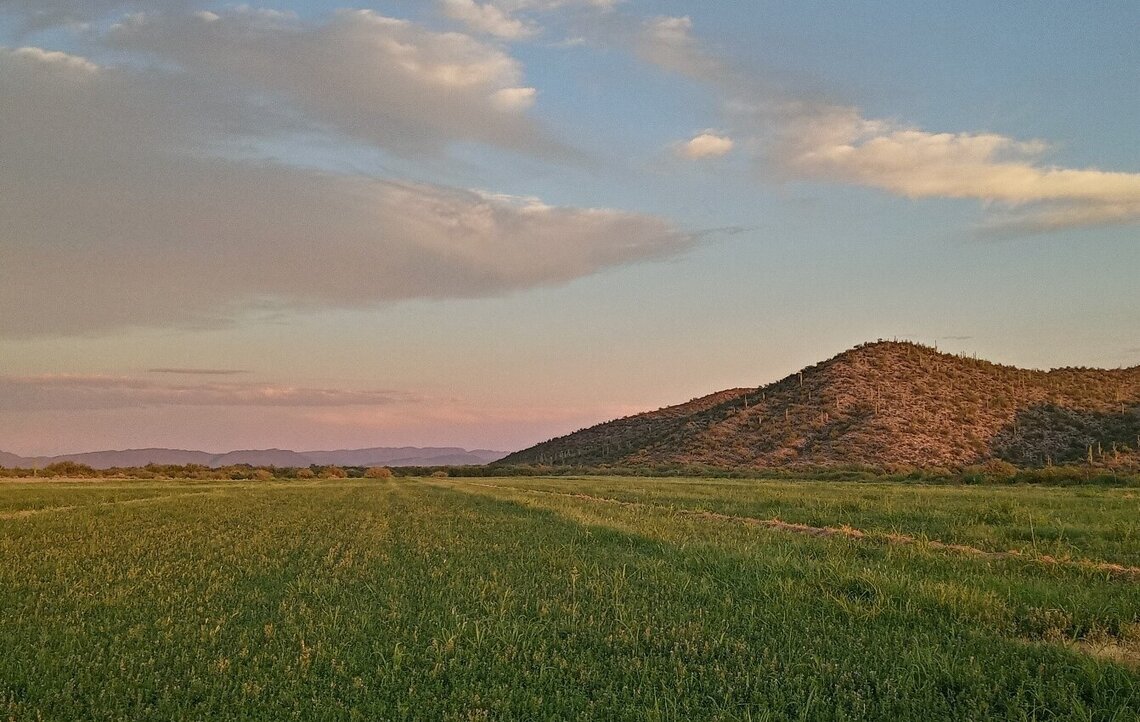Abel Domínguez-Pompa, Postgraduate in Biosciences, Department of Scientific and Technological Research, University of Sonora
Bird populations in North America have decreased significantly, with agriculture being one of the main causes. On the other hand, agriculture can modify and generate new habitats than can be used by different bird species. In the Sonoran Desert, agriculture has spread possibly affecting bird populations that inhabit the region, however, the effect is unknown. Therefore, we compared the richness and abundance of birds in agricultural and non-agricultural areas in the Hombres Blancos ejido valley, in Sonoyta, Sonora, Mexico. The registry of species and individuals was carried out using point counts of variable radius. There was a total of 35-point counts with 17 established in non-agricultural areas (Sonoyta River and crasicaulescent scrubs) and 18 in agricultural areas. Point counts consisted of 5 minutes to record species and individuals at a 250m interval. Point counts were visited during the first hours of the morning in four different occasions with 5-day intervals in winter 2018, summer 2019, winter 2019, summer 2020, and winter 2020.

A total of 108 bird species were recorded. There were 79 species recorded within agricultural areas, whereas the non-agricultural areas recorded 66 species. The agricultural area had a total of 8,396 individuals, more than doble the record for the non-agricultural area of 3,091 individuals. There were only 11 bird species recorded exclusively in non-agricultural areas such as the Red-naped Sapsucker (Sphyrapicus nuchalis), Yellow-breasted Chat (Icteria virens), Yellow-billed Cuckoo (Coccyzus americanus). On the other hand, there were 42 species exclusively recorded in agricultural areas. In this sense, birds exclusive to agricultural areas are mainly sparrows such as Brewer’s Sparrow (Spizella breweri), Chipping Sparrow (Spizella passerina), and Vesper Sparrow (Pooecetes gramineus).

The agricultural area was used by residential species, and migratory summer and winter species. Some residential species found in this habitat include the Vermilion Flycatcher (Pyrocephalus rubinus), Brown-headed Cowbird (Molothrus ater), Northern Mockingbird (Mimus polyglottos), among others. Blue Grosbeak (Passerina caerulea), Western Kingbird (Tyrannus verticalis), and Hooded Oriole (Icterus cucullatus) were the summer migratory species commonly found in agricultural areas. Lastly, Lark Bunting (Calamospiza melanocorys), Vesper Sparrow (Pooecetes gramineus), and Western meadowlark (Sturnella neglecta), are species that winter in agricultural areas. The European Starling (Sturnus vulgaris) and the House Sparrow (Passer domesticus) were the exotic species recorded within agricultural areas. Additionally, the Rock Dove (Columbina livia) was recorded travelling from urban to agricultural areas to feed.
Agricultural areas are surrounded by vegetation that provides protection and roosting sites. Also, during breeding season, there are several species that use the surrounding vegetation as nesting sites. Species breeding in these borderline habitats travel inside the agricultural area to feed. The main species recorded in non-agricultural areas were residential and summer migratory species. Likewise, species such as the Gila Woodpecker (Melanerpes uropygialis), Elf owl (Micrathene whitneyi), and Northern Flicker (Colaptes auratus) nest in cavities in saguaro cactus more frequently in non-agricultural areas.
The high concentration (richness and abundance) of residential and migratory birds in agricultural areas can be due to these areas providing roosting, nesting, and feeding sites throughout the year. Moreover, non-agricultural areas provide feeding and nesting sites during the summer for resident and migratory species. It will be of great importance to sustain and protect both areas to conserve bird population in northeastern Sonora, Mexico.
I am grateful to Idea Wild for the donation of field equipment.

